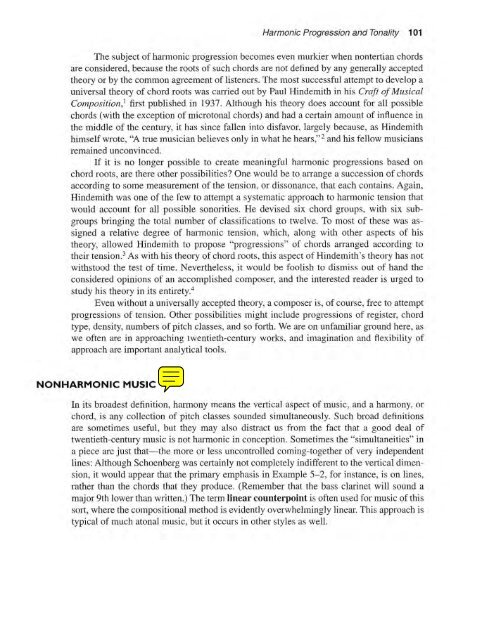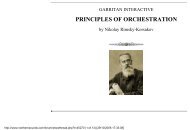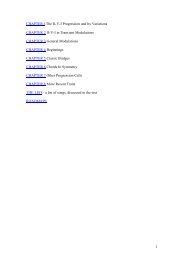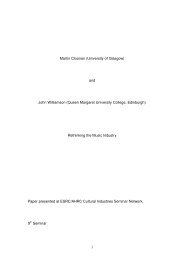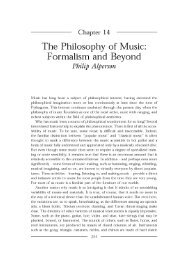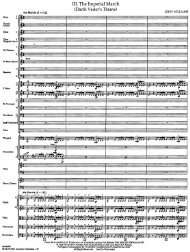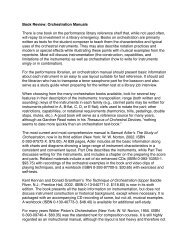TWENTIETH- - Synapse Music
TWENTIETH- - Synapse Music
TWENTIETH- - Synapse Music
Create successful ePaper yourself
Turn your PDF publications into a flip-book with our unique Google optimized e-Paper software.
Harmonic Progression and Tonality 101<br />
The subject of harmonic progression becomes even murkier when nontenian chords<br />
are considered, because the roots of such chords are not defined by any generally accepted<br />
theory or by the common agreement of listeners. The most successful attempt to develop a<br />
universal theory of chord roots was carried out by Paul Hindemith in his Craft of <strong>Music</strong>al<br />
Composition,' first published in 1937. Al though his theory does account for al\ possible<br />
chords (with the exception of microtonal chords) and had a certain amount of influence in<br />
the middle of the century, it has since fallen into disfavor. largely because, as Hindemith<br />
himself wrote, ''A true musician believes only in what he hears,"2 and his fellow musicians<br />
remained unconvinccd.<br />
If it is no longer possible to create meaningful harmonic progressions based on<br />
chord roots, are there other possibilities? One would be to arrange a succession of chords<br />
according to some measurement of the tension, or dissonance, that each contains. Again,<br />
Hindemith was one of the few to attempt a systematic approach to harmonic tension that<br />
would account for all possible sonorities. He devised six chord groups, with six subgroups<br />
bringing the total number of classifications to twelve. To most of these was assigned<br />
a relative degree of harmonic tension, which, along with other aspects of his<br />
theory, allowed Hindemith to propose "progressions" of chords arranged according to<br />
theirtension. 3 As with his theory of chord roots, this aspect of Hindemith's theory has not<br />
withstood the test of time. Nevertheless, it wo uld be foolish to dismi ss out of hand the<br />
considered opinions of an accomplished composer, and the interested reader is urged to<br />
study his theory in its entirety'<br />
Even without a universally accepted theory, a composer is, of course, free to attempt<br />
progressions of tension. Other possibilities might include progressions of register, chord<br />
type, density, numbers of pitch classes, and so forth. We are on unfamiliar ground here, as<br />
we often are in approaching lwentieth-century works, and imaginalion and flexibility of<br />
approach are impOitanl analytical tools.<br />
NONHARMONIC MUSIC<br />
In its broadest definition, harmony means the vertical aspect of music, and a harmony, or<br />
chord. is any collcction of pitch classes sounded simultaneously. Such broad definitions<br />
are sometimes useful , but they may also distract us from the fact that a good deal of<br />
twentieth-century music is not harmonic in conception. Sometimes the "simultanei ties" in<br />
a piece are just that- the more or less uncontrolled com ing-together of ve ry independent<br />
lines: Although Schoenberg was certainl y not completely indifferent to the vertical dimcnsion,<br />
it would appear that the primary emphasis in Example 5-2, for instance, is on lines,<br />
rather than the chords that they produce. (Remember that the bass clarinet will sound a<br />
major 9th lower than wri tten.) The term linear counterpoint is often used for music of this<br />
sort, where the compositional method is evidently overwhelmingly linear. This approach is<br />
typical of much atonal music, but it occms in other styles as welL


